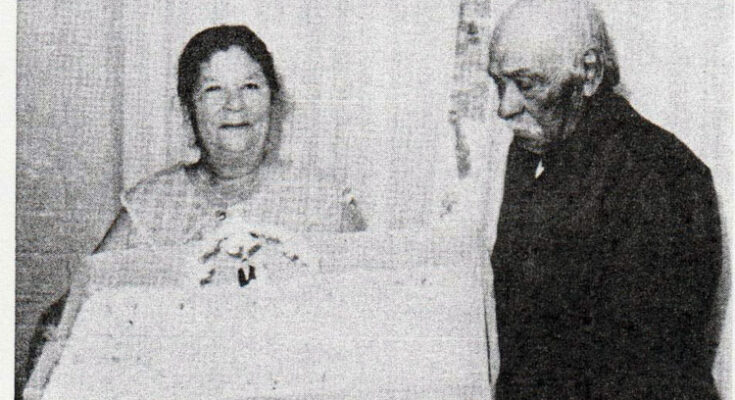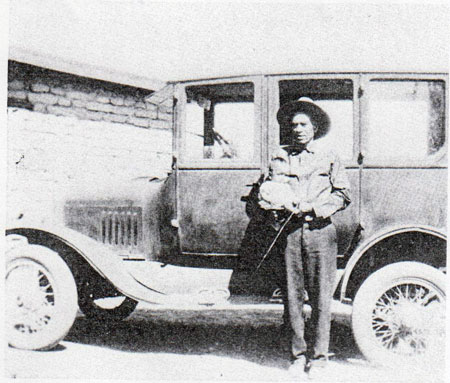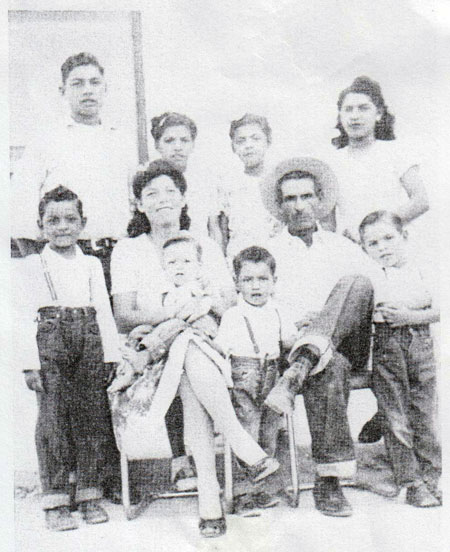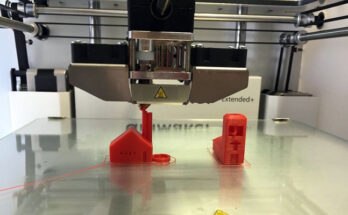Contributed Photo: Federico and Reymunda Sanchez.
By Edres Bryant Barney
In honor of National Hispanic Heritage Month, I wanted to pay tribute to those who helped build up the communities they chose to settle in. In the early 1900s, many Hispanic families called the Gila Valley home. Their lives and work contributed greatly to the growth and development of the area. A sprinkling of those families who settled around the Pima area were: Antonio and Paula Chavez, Cipriano Avila, Leo Dominguez, Sr., Isaac Leyva, Filomeno Butierez, and the large Benavidez family. The following is the story of a well-known patriarch of a large family that settled in Glenbar. I am quite sure that each of the local Hispanic families has an interesting story.
Federico E. Sanchez, a longtime farmer, and rancher in the Glenbar area, has a most interesting story. He was born in Uvalde, Texas, on Aug. 14, 1874, to Francisco E. Sanchez and Guadalupe Espinoza, who were both natives of Mexico. As a young boy, Federico wanted adventure all the time, so he went to Mexico and joined Pancho Villa’s forces. He started as a clean-up boy and then worked his way up to brushing horses for Villa, who trusted him very much. He was finally asked to ride with them for some time. Then he had the responsibility to come to the U.S. and buy horses for Villa’s forces. He would buy them in Texas, New Mexico, wherever he could find them, staying as close to the border as he could. Once, he came over to the U.S. side, he did not care to go back anymore.
Under orders from Madero, Fred was accompanied by a nephew of Madero, also his real good friend, who had the military rank of Sargent with a bar on the sleeve of his coat. He bought many horses from a ranch in Texas called Las Tres Varas (The Three Bars). Two years later he met Reymunda Colobrio. They fell in love and wanted to be married but because of the war activities in that area, there was no civil authority to perform marriages; thus, Fred and Reymunda lived together until 1915 when it became possible for them to be married. Pancho Villa frequently ate in their home and during intense fighting in and around Ascension in 1914, he stayed for about a month. Their nine-month-old, Miguel, died of shock caused by the heavy fighting and shooting that took place there. Mrs. Sanchez recalled how the baby was trembling all over; her attempts to calm him by nursing him failed and he died on Sept. 29, 1914.

In 1915, Fred was with a group of soldiers who captured some of Colorado’s men, holding them prisoners. They managed to escape. Because of this, Fred knew that he might have to pay with his life. His father-in-law, Antonio Colobrio, an army captain, advised him to flee to the United States. Taking his advice, he left Mexico and found himself in Pima working on a farm for Ed Moody. He later sent a friend back to Ascension to make arrangements to bring his wife to Columbus, New Mexico where he would meet her. Reymunda’s stepmother accompanied her to Columbus and from there Fred and his wife boarded a train, coming directly to Pima.
Sixteen children were born to this couple after making their home in Matthewsville (Glenbar). They both had to work hard to keep their family fed and as their children grew, teaching them the value and joy of working hard. They built their first home on their own land on a farm bought from Lewis Allen. On this farm they raised Angora goats, increasing their herd until they owned about 300 head. This provided a fairly good income as the mohair sold for 50 cents per pound. Shearing the goats was a big job that was done by hand. Later, shears run by a gasoline engine helped to ease the job.
A great deal of excitement was caused in the valley when a big oil company sent men in to drill test wells in hopes of finding oil. One well was drilled on the James H. Mack farm. It didn’t produce any oil, but it did strike an artesian well of boiling hot water, becoming one of the natural wonders of the valley, putting Glenbar on the map. As the water was too hot to use on the Mack farm, Fred, along with Frank Matthews had the idea to pipe it into the canal and by the time it reached their farms several miles away, it would be cool enough to irrigate with. It became quite an asset to the farmers on the lower end of the canal. Farmers would take their pigs and chickens to the hot well to scald for cleaning.
Five sons were in the service of their country at one time, three serving overseas during World War II. They were fortunate; all returned home alive and with no injuries. Their children married and gave them many grandchildren and great-grandchildren, etc., contributing much to the settlement and betterment of the area. It was the pleasure of this writer to personally know Lyle Sanchez, as he was married to my good friend, Jessie Celix. Lyle was a very hard worker; a good, kind gentleman. Many Sanchez descendants call the Gila Valley home.
This and other individual and family histories may be found at the Eastern Arizona Museum in Pima with hours Thursday thru Saturday, 10 a.m. – 3 p.m.











